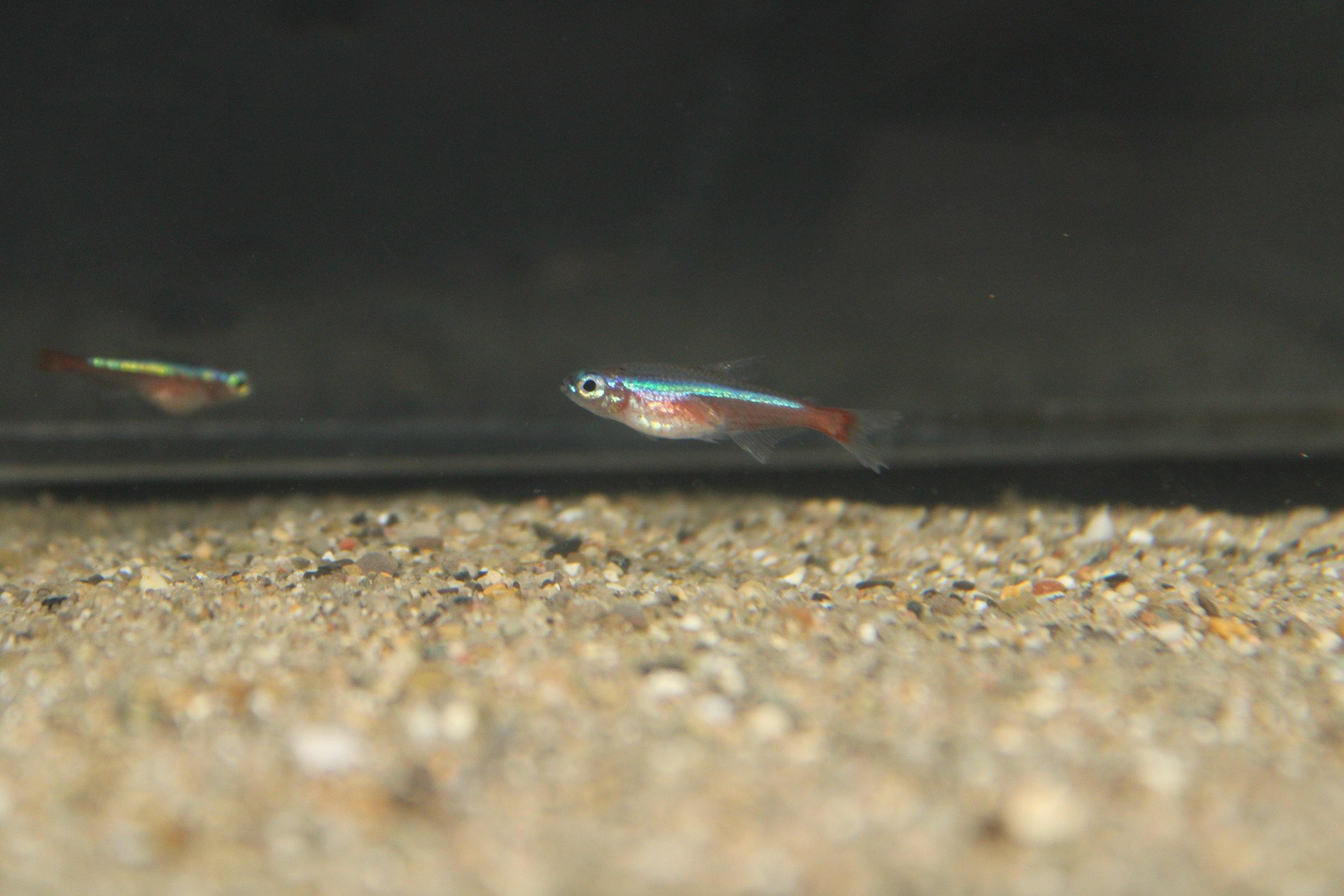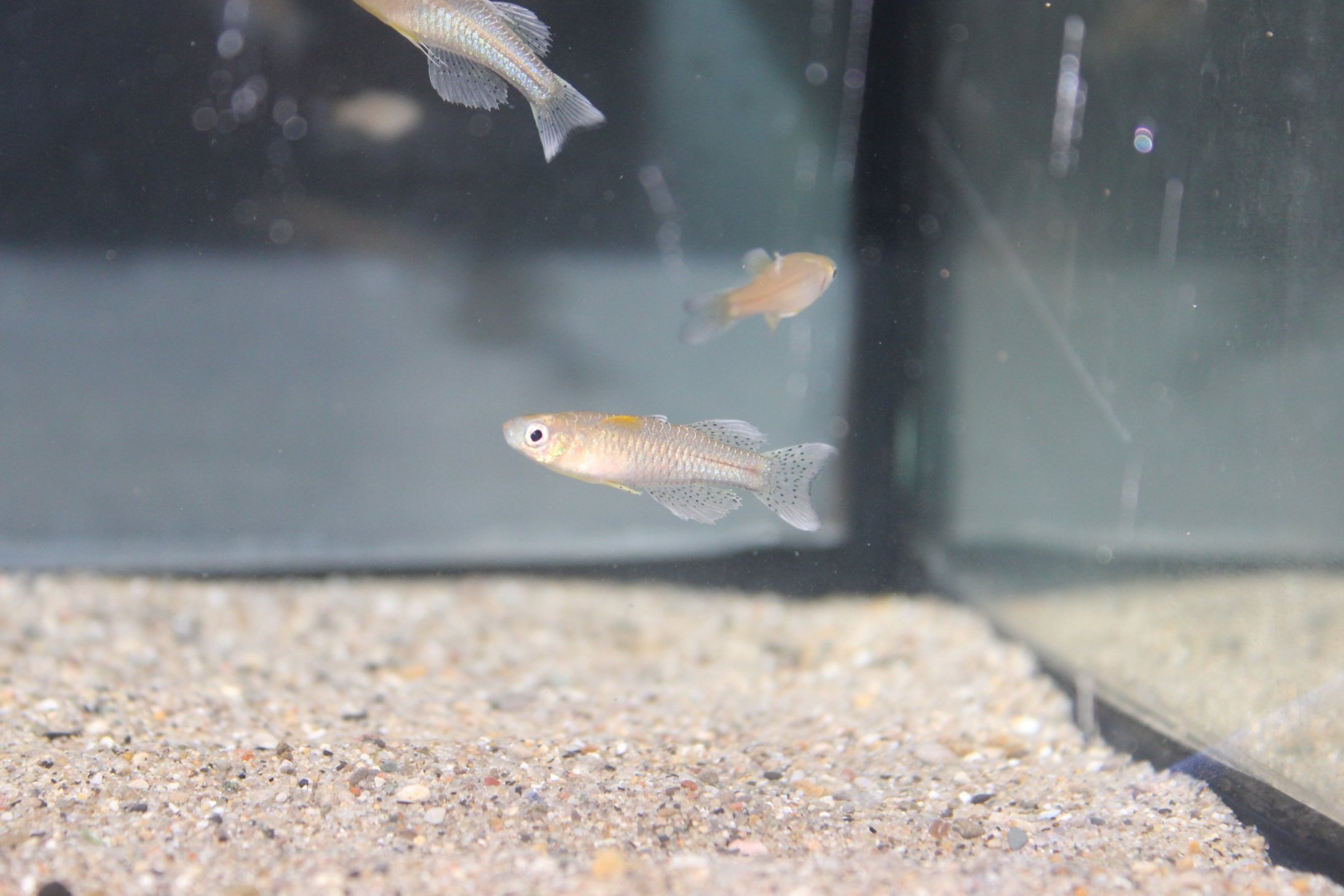Apistogramma (Fire Red) Agassizii Dwarf Cichlid
Apistogramma agassizii “Fire Red” – Fiery Nano Dwarf Cichlid for Advanced Aquascapes
The Apistogramma agassizii “Fire Red” is a brilliantly colored dwarf cichlid variety known for its flame-toned fins, metallic sheen, and vibrant personality. A selectively bred strain of the South American Apistogramma agassizii, this compact species boasts deep red and orange fin coloration that intensifies with maturity and proper care — especially when kept in planted, well-structured aquariums.
At around 1 inch in size, these young Fire Reds are juveniles nearing sexable age, perfect for growing out or establishing a pair in a community or species-dedicated tank. Though small, they display bold behavior and fascinating interactions — especially during courtship and territory displays.
Key Features
Scientific Name: Apistogramma agassizii “Fire Red”
Common Name: Fire Red Agassizii, Apisto Fire Red
Size Shipped: ~1 inch (juveniles)
Adult Size: ~2.5–3 inches (males), ~2 inches (females)
Temperament: Semi-aggressive, territorial during breeding
Lifespan: 3–5 years
Swimming Level: Bottom to mid-water
Origin: Tank-bred, selectively line-bred
Ideal Water Parameters
Temperature: 74°F – 82°F (23°C – 28°C)
pH: 5.5 – 7.0 (slightly acidic preferred)
GH: 2 – 8
KH: 0 – 4
Minimum Tank Size: 15–20 gallons (larger for pairs or communities)
Tank Setup: Heavily planted, leaf litter, caves, soft substrate
Filtration: Gentle flow; clean, oxygenated water
Why Choose Apistogramma “Fire Red”?
✔ Intense red-orange coloration with shimmering body tones
✔ Fascinating cichlid behavior in a compact size
✔ Compatible with peaceful tankmates and shrimp-safe (in many cases)
✔ Great for planted, South American biotope aquariums
✔ Selectively bred for vivid coloration and temperament
Feeding & Diet
High-quality micro pellets and cichlid granules
Frozen or live foods: bloodworms, brine shrimp, daphnia
Occasional veggie-based flakes or sinking foods
Feed 1–2 times daily; offer live foods to enhance color and breeding activity
Apistogramma agassizii “Fire Red” offers a dramatic pop of color and behavior to the bottom levels of any well-maintained aquarium. Perfect for aquarists seeking something showy yet compact, this dwarf cichlid adds both personality and visual depth to your aquascape.
While Apistogrammas are dwarf cichlids, they’re generally peaceful outside of breeding and do well with calm, non-aggressive species that occupy different parts of the tank. Ideal tankmates include:
✅ Compatible Species
Tetras (e.g. Ember, Rummy Nose, Cardinal, Lemon) – mid-to-top swimmers
Hatchetfish – peaceful surface dwellers
Small Rasboras – like Harlequins or Chili Rasboras
Corydoras Catfish – bottom-dwellers, but peaceful and non-territorial
Otocinclus – algae-eating and shy; won’t bother Apistos
Dwarf Pencilfish – low-key surface species
Shrimp (with caution) – adult Amano or large Neocaridina may be safe in heavily planted tanks
🚫 Avoid These
Fin-nippers (e.g., Tiger Barbs)
Aggressive or large cichlids
Fast, boisterous fish like Danios
Shrimp fry if breeding is a goal (they may be eaten)
🐣 How to Breed Apistogramma Agassizii “Fire Red”
Breeding Apistos is rewarding — they are cave spawners with fascinating parental care, especially from females.
📦 What You’ll Need
1 male + 1–2 females (males often do best with a harem)
20–30 gallon tank with heavy planting, caves (coconut huts, ceramic tubes, rock overhangs)
Soft, acidic water:
pH: 5.5–6.8
Temperature: 78°F – 82°F
GH: 3–6
KH: very low to zero
✅ Breeding Steps
Condition with high-protein foods like live/frozen brine shrimp, daphnia, or blackworms for 1–2 weeks.
Ensure territory and hiding spots. Females will claim a cave when ready.
Female lays eggs (typically 20–60) on cave ceilings or hidden surfaces.
She guards and fans the eggs while the male patrols the tank.
Eggs hatch in 2–4 days, fry become free-swimming in ~7 days.
Feed fry infusoria, then progress to baby brine shrimp or powdered fry food.
🔄 Remove tankmates if you want higher fry survival — or breed in a separate tank.
📝 Bonus Tips:
Use botanicals like Indian almond leaves or alder cones to simulate natural water chemistry.
Don’t disturb the female once eggs are laid — they can eat the eggs if stressed.
Once the fry are free-swimming, you can leave them with the parents or raise them in a grow-out tank.
Apistogramma agassizii “Fire Red” – Fiery Nano Dwarf Cichlid for Advanced Aquascapes
The Apistogramma agassizii “Fire Red” is a brilliantly colored dwarf cichlid variety known for its flame-toned fins, metallic sheen, and vibrant personality. A selectively bred strain of the South American Apistogramma agassizii, this compact species boasts deep red and orange fin coloration that intensifies with maturity and proper care — especially when kept in planted, well-structured aquariums.
At around 1 inch in size, these young Fire Reds are juveniles nearing sexable age, perfect for growing out or establishing a pair in a community or species-dedicated tank. Though small, they display bold behavior and fascinating interactions — especially during courtship and territory displays.
Key Features
Scientific Name: Apistogramma agassizii “Fire Red”
Common Name: Fire Red Agassizii, Apisto Fire Red
Size Shipped: ~1 inch (juveniles)
Adult Size: ~2.5–3 inches (males), ~2 inches (females)
Temperament: Semi-aggressive, territorial during breeding
Lifespan: 3–5 years
Swimming Level: Bottom to mid-water
Origin: Tank-bred, selectively line-bred
Ideal Water Parameters
Temperature: 74°F – 82°F (23°C – 28°C)
pH: 5.5 – 7.0 (slightly acidic preferred)
GH: 2 – 8
KH: 0 – 4
Minimum Tank Size: 15–20 gallons (larger for pairs or communities)
Tank Setup: Heavily planted, leaf litter, caves, soft substrate
Filtration: Gentle flow; clean, oxygenated water
Why Choose Apistogramma “Fire Red”?
✔ Intense red-orange coloration with shimmering body tones
✔ Fascinating cichlid behavior in a compact size
✔ Compatible with peaceful tankmates and shrimp-safe (in many cases)
✔ Great for planted, South American biotope aquariums
✔ Selectively bred for vivid coloration and temperament
Feeding & Diet
High-quality micro pellets and cichlid granules
Frozen or live foods: bloodworms, brine shrimp, daphnia
Occasional veggie-based flakes or sinking foods
Feed 1–2 times daily; offer live foods to enhance color and breeding activity
Apistogramma agassizii “Fire Red” offers a dramatic pop of color and behavior to the bottom levels of any well-maintained aquarium. Perfect for aquarists seeking something showy yet compact, this dwarf cichlid adds both personality and visual depth to your aquascape.
While Apistogrammas are dwarf cichlids, they’re generally peaceful outside of breeding and do well with calm, non-aggressive species that occupy different parts of the tank. Ideal tankmates include:
✅ Compatible Species
Tetras (e.g. Ember, Rummy Nose, Cardinal, Lemon) – mid-to-top swimmers
Hatchetfish – peaceful surface dwellers
Small Rasboras – like Harlequins or Chili Rasboras
Corydoras Catfish – bottom-dwellers, but peaceful and non-territorial
Otocinclus – algae-eating and shy; won’t bother Apistos
Dwarf Pencilfish – low-key surface species
Shrimp (with caution) – adult Amano or large Neocaridina may be safe in heavily planted tanks
🚫 Avoid These
Fin-nippers (e.g., Tiger Barbs)
Aggressive or large cichlids
Fast, boisterous fish like Danios
Shrimp fry if breeding is a goal (they may be eaten)
🐣 How to Breed Apistogramma Agassizii “Fire Red”
Breeding Apistos is rewarding — they are cave spawners with fascinating parental care, especially from females.
📦 What You’ll Need
1 male + 1–2 females (males often do best with a harem)
20–30 gallon tank with heavy planting, caves (coconut huts, ceramic tubes, rock overhangs)
Soft, acidic water:
pH: 5.5–6.8
Temperature: 78°F – 82°F
GH: 3–6
KH: very low to zero
✅ Breeding Steps
Condition with high-protein foods like live/frozen brine shrimp, daphnia, or blackworms for 1–2 weeks.
Ensure territory and hiding spots. Females will claim a cave when ready.
Female lays eggs (typically 20–60) on cave ceilings or hidden surfaces.
She guards and fans the eggs while the male patrols the tank.
Eggs hatch in 2–4 days, fry become free-swimming in ~7 days.
Feed fry infusoria, then progress to baby brine shrimp or powdered fry food.
🔄 Remove tankmates if you want higher fry survival — or breed in a separate tank.
📝 Bonus Tips:
Use botanicals like Indian almond leaves or alder cones to simulate natural water chemistry.
Don’t disturb the female once eggs are laid — they can eat the eggs if stressed.
Once the fry are free-swimming, you can leave them with the parents or raise them in a grow-out tank.



































